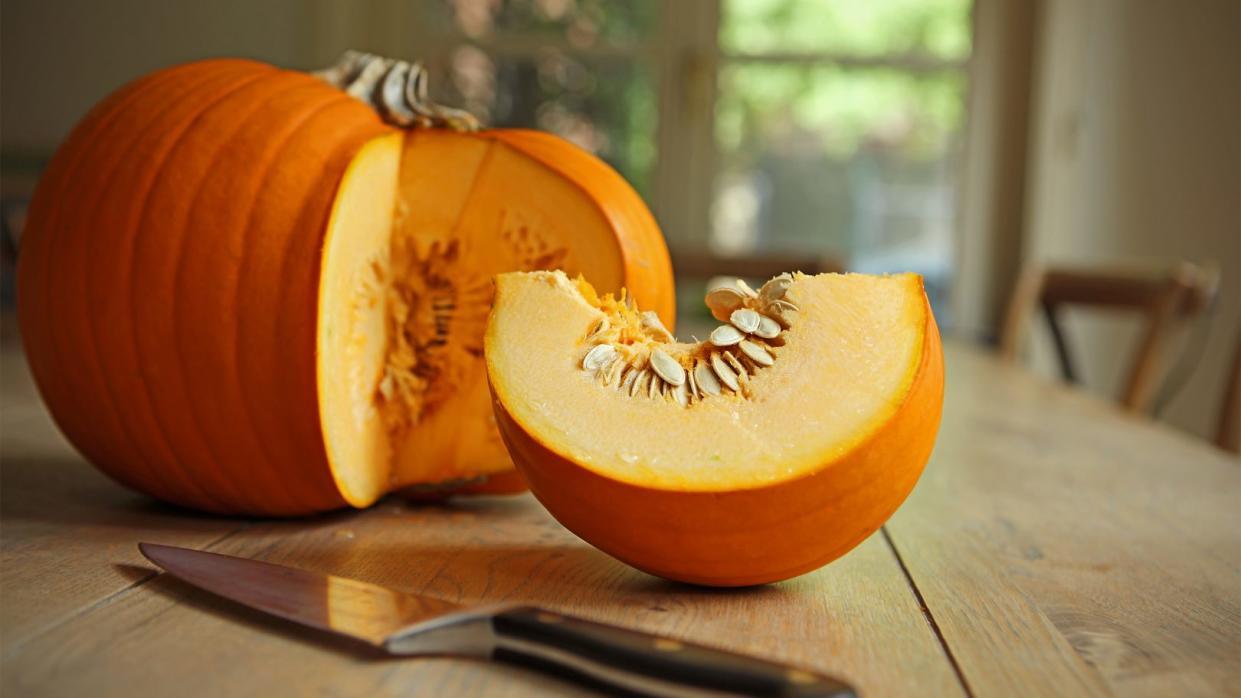5 reasons why superfood pumpkin is so much more than a trendy seasonal flavor

Joey Skladany is an In The Know cooking contributor. Follow him on Instagram and visit his website for more.
Pumpkins are perfect for pies, curries, jack-o-lanterns and the ever-so-polarizing spiced latte, but the orange fruit (yes, fruit) is so much more than a cinnamon-topped seasonal staple. It’s a certified superfood, chock-full of health benefits that will have you saying, “Oh my gourd, why hasn’t it always been part of my weekly diet?”
Of course, chugging the syrup-laden drink at Starbucks won’t provide these vitamins and minerals, but if you’re roasting pumpkin flesh or incorporating it into a soup or stew, you’ll be happy to know that you’re not just participating in a fad often described as “basic” — you’re eating something that will nourish the body and potentially help you to stave off illnesses in the cooler months.
Here are five surprising advantages of pumpkin that will have you reaching for a can (or vine, preferably) beyond the months of September, October and November.
1. Pumpkin is good for your immune system.
Beta carotene is a red-orange pigment found predominantly in foods like carrots, sweet potatoes, tomatoes and — you guessed it — pumpkins that the body converts into vitamin A. And since vitamin A has been proven to boost the activity of immunity-strengthening cells, pumpkins may, as a result, help fortify your body’s protection against cold and flu-causing germs.
2. Pumpkin is good for your heart.
Beans, beans, they’re good for your heart, but so is the great pumpkin, Charlie Brown. Boasting high levels of potassium, a daily serving of pumpkin may reduce high blood pressure, which puts less strain on the organ of love. Additionally, it’s also high in fiber, which is proven to lower cholesterol and your chances of developing cardiovascular disease.
3. Pumpkin is good for your skin.
That aforementioned beta carotene is also fantastic for your skin. It protects the dermis from harmful ultraviolet rays and may even improve skin texture and luminosity.
Pumpkin enzymes and alpha-hydroxy acids also help break down dead skin cells, leading to a glowier, brighter surface that can reduce the appearance of fine lines and wrinkles.
4. Pumpkin is low in calories.
If you’re hoping to limit your caloric intake, pumpkin clocks in at less than 150 calories per cup. Of course, adding butter, sugar and oils will significantly up this number, but pumpkin can serve as a wonderful base or ingredient swap for many popular dishes like pasta sauces, soups, chilis and even hummus.
Pumpkin’s high fiber content (a whopping seven grams per serving) will also have you feeling fuller longer and aid in overall digestive and bowel health.
5. Pumpkin has seeds that are just as nutritious.
A pumpkin’s insides aren’t the only thing deserving of nutritionist fanfare. Nutrient-heavy pumpkin seeds, otherwise known as pepitas, are a wonderful source of antioxidants, vitamins and minerals that can reduce inflammation, protect your immune system and support bone health, respectively. So be sure to salvage those seeds and toss them on your morning yogurt or oatmeal. Or simply roast and season them for a late-afternoon snack that’s heavy on crunch and light on strenuous preparation methods.
If you enjoyed this story, here are 13 grocery items that you should be buying in bulk!
The post 5 reasons why superfood pumpkin is so much more than a trendy seasonal flavor appeared first on In The Know.

